The Cabildo House
Perhaps, the mark of a good story is how many threads are woven in. A tale woven with many strands creates a rich tapestry. At any rate, those are the stories that I am drawn to. Certainly, Garrison Keillor is to blame for this bias, leading listeners down the countless rabbit holes of Lake Woebegone every weekend. Good buildings, like good stories, are those structures capable of accumulating many threads. Each successive renovation and retelling of a structure takes on a new layer, thickens the soup. The fabric of our society begins unraveling when we rip apart large sections of it every 30 to 50 years. Our built environments try desperately to invoke a sense of belonging and constancy. Old-world signs and thin layers of veneer can never hope to achieve a real and lasting effect. Invoking a real sense of place requires enduring structures and attentive vernacular.
Let us begin building enduring structures. Let us begin recognizing and cherishing the old structures we do have. Finding ourselves going down the wrong road is a poor excuse to not begin correcting the course. I want to begin keeping a record of enduring and resilient structures here on the blog. Appreciating the old helps in building the new.
I came across this first building during a consultation job in Saint Francisville, Louisiana. The Gammills, who are the builders on the project, kindly invited me to stay with them at their house. I graciously accepted, and many thanks to the Gammill’s for their generosity. Regionally, this area of Louisiana is a well known destination, but virtually unknown to most folks across the country. The whole side of my dad's family is from Louisiana, with deep roots in Saint Francisville. Oddly enough, this was not my first trip to Saint Francisville. Quite a small world moment when my work takes me to the same small town where I went on family trips to visit relatives. As the Gammill's began sharing with me the story of their house, I wound up realizing that my family history and their house intersected at many points.
Originally built circa 1809 the Cabildo House sits on the main corner of town directly across from the courthouse. The town was founded in 1809 and that’s when records become reliable. Before then records took turns being written in Spanish and French as control changed hands in the region. Undoubtedly, this building was here before the town was, it’s just a question of how much earlier. Safe to say, that this is the oldest house I’ve stayed in, clocking in over 200 years. But as I’ve said, this wasn’t always a house. It’s believed that the building first served as a warehouse for the town’s port, which for a time was the largest harborside between Natchez and New Orleans. Later it was the capital building for the short-lived country of The Republic of West Florida in 1810. After that brief, 45 day career as a capital building, this structure fulfilled a variety of needs as a courthouse, tavern, bank, barber shop and library. Then the place sat empty. In the 1950s when Portland cement was the hot new material in the residential world, someone came along and covered the entire exterior with a thick Portland cement based stucco. Such a hard and aggressive material should never be used on brick and such an application especially on a soft field dried brick like the kind used on this building. Despite that rough treatment and years and years of neglect, the Gammills were able to reuse and recycle the building and turn it into a lovely home. Certainly, the resilient nature of structural masonry building is what allowed the Gammills to make their home out of a 200 something year old building.
What a testament to the resiliency and durability of solid mass wall masonry, for a building to take such a beating in abuse and alterations throughout the years to still be able to function as such a lovable structure.
And that brings us back to where we started talking about stories. A good story contains numerous threads within. In their own way buildings are stories in and of themselves. Like a good story told 'round the campfire, a good building has a lot of threads in it and you can't have a lot of threads if you don't live a lot of years.
Back when the structure was a barbershop, the barber would take his lunch down the hill at a boarding house run by my great grandmother. My grandfather and his brother got their hair cut at that barbershop. When the building became the town library, Mrs. Gammill spent her childhood going there with her grandmother. Now her own grandkids run around the same building, creating more fond memories. How remarkable it is to stumble upon one of those richly woven stories and then to find out that your own thread plays a part of the fabric?
Perhaps the worst aspect about our disposable building culture is not that it's a waste of resources but that it’s a waste of memories, stories, and lessons learned from people that come before us. Certainly, to waste resources the way that we're currently doing is grievous, but we're also losing our sense of place, our sense of self and who we are and how we are connected to the world around us.
For further reading please check out this insightful blog post by Anne Butler.
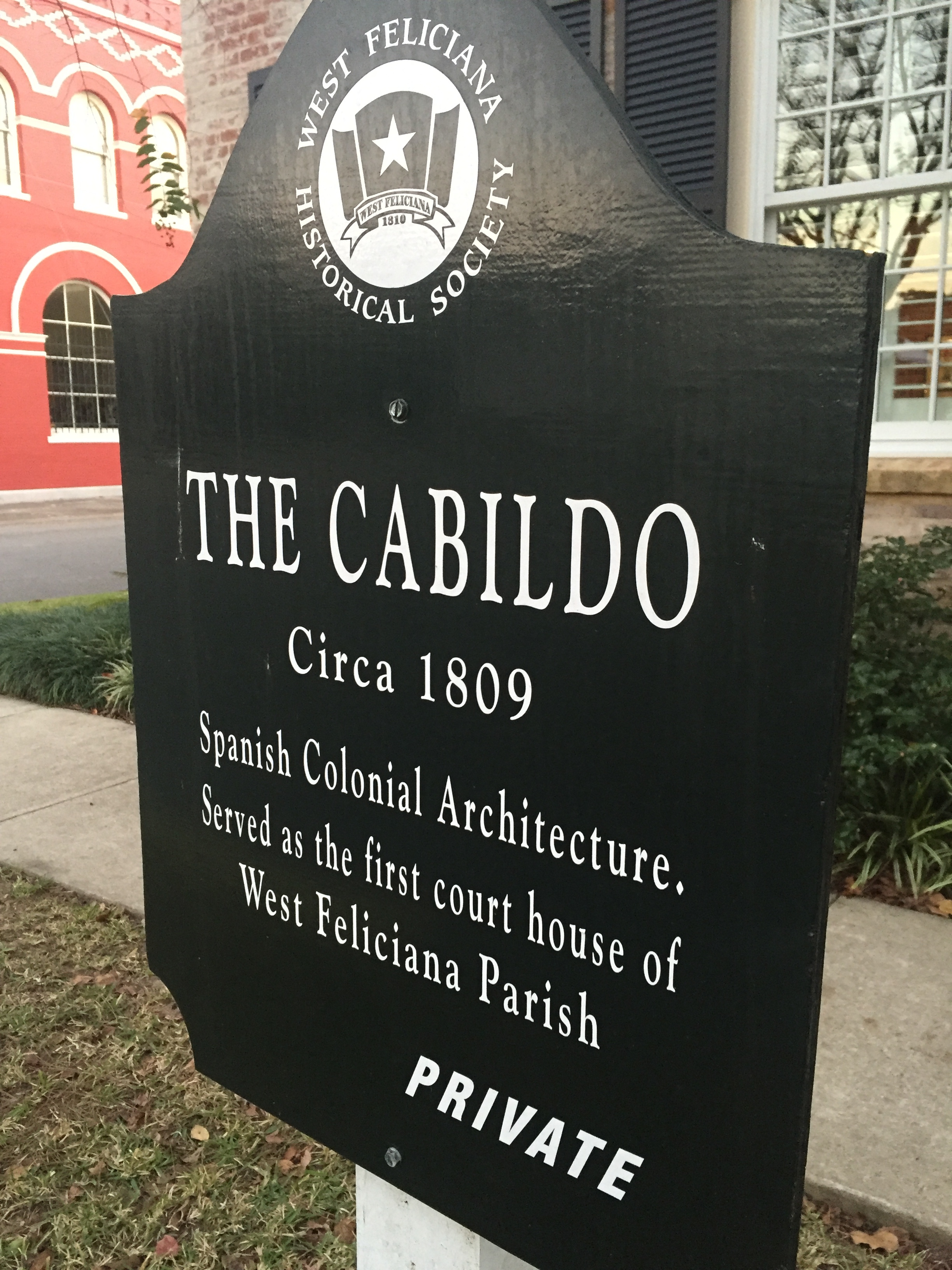
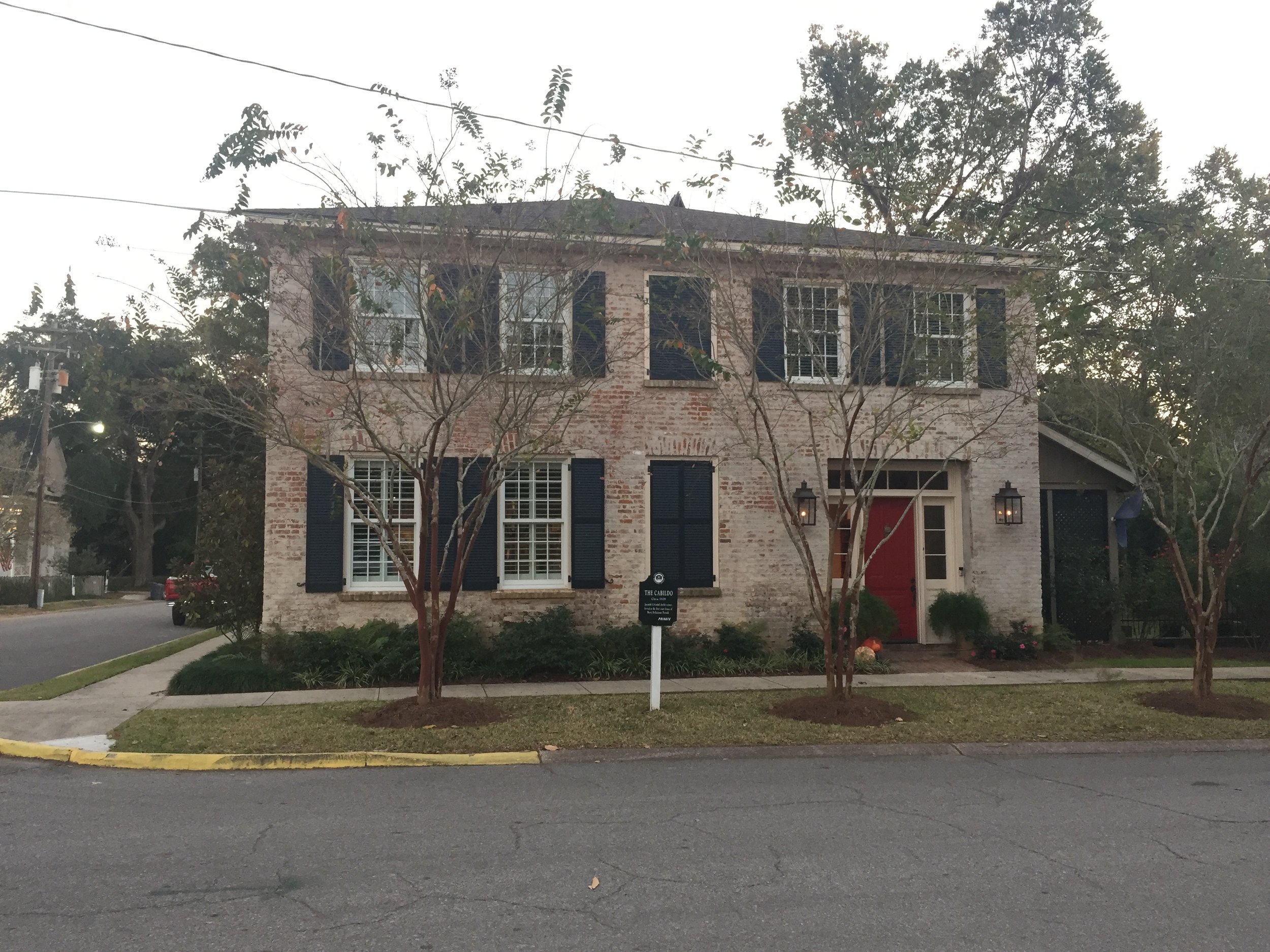
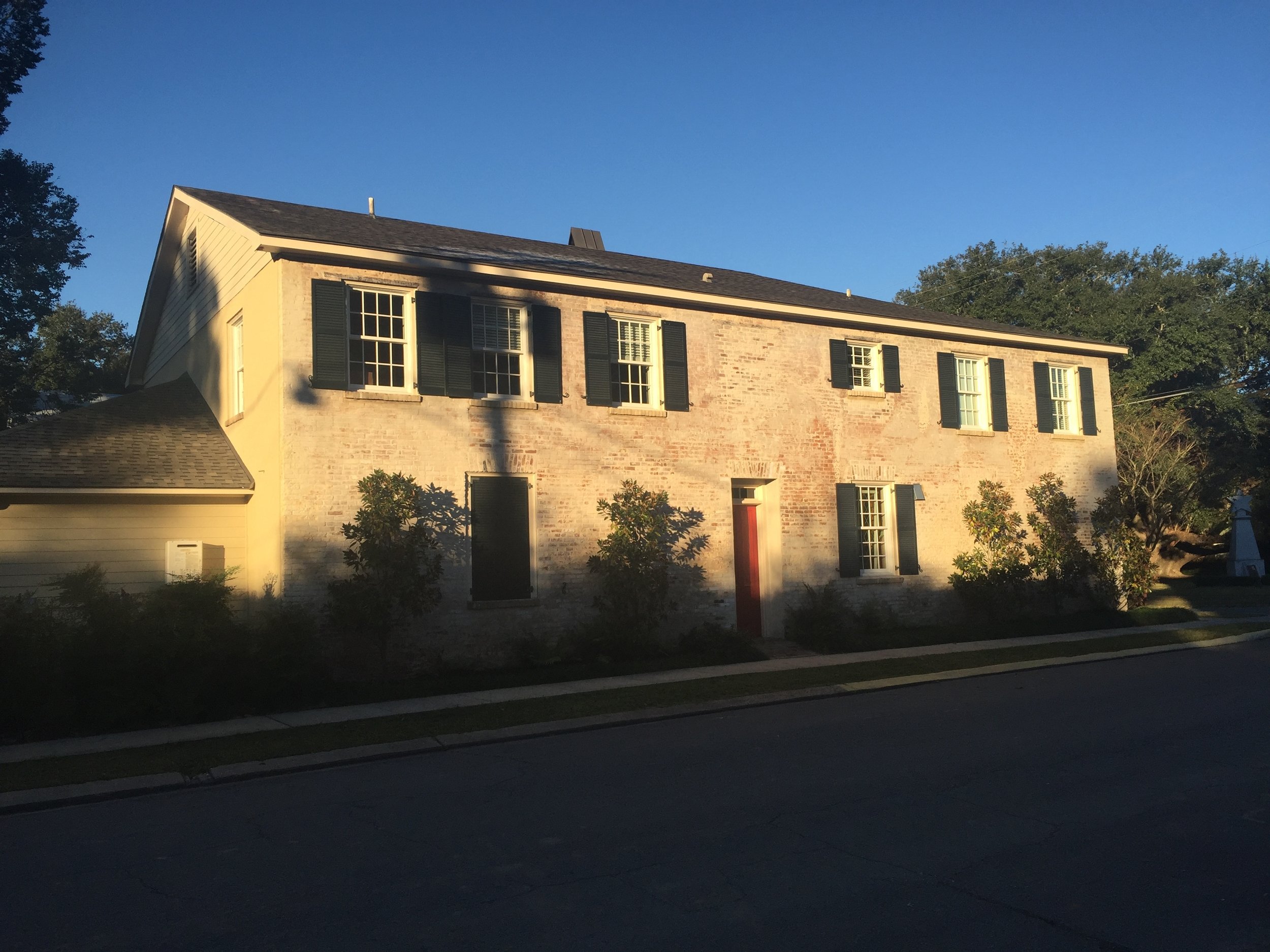
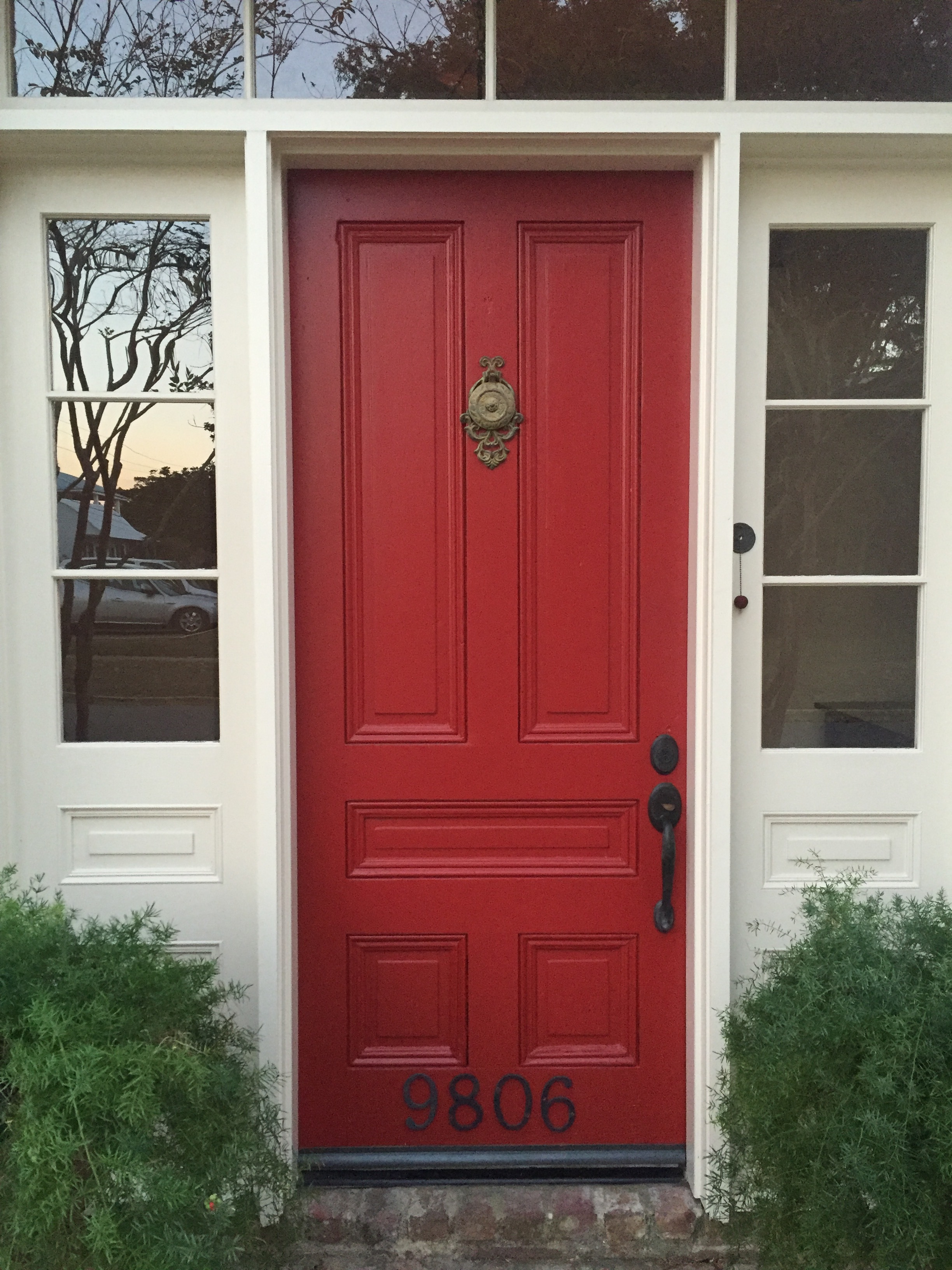


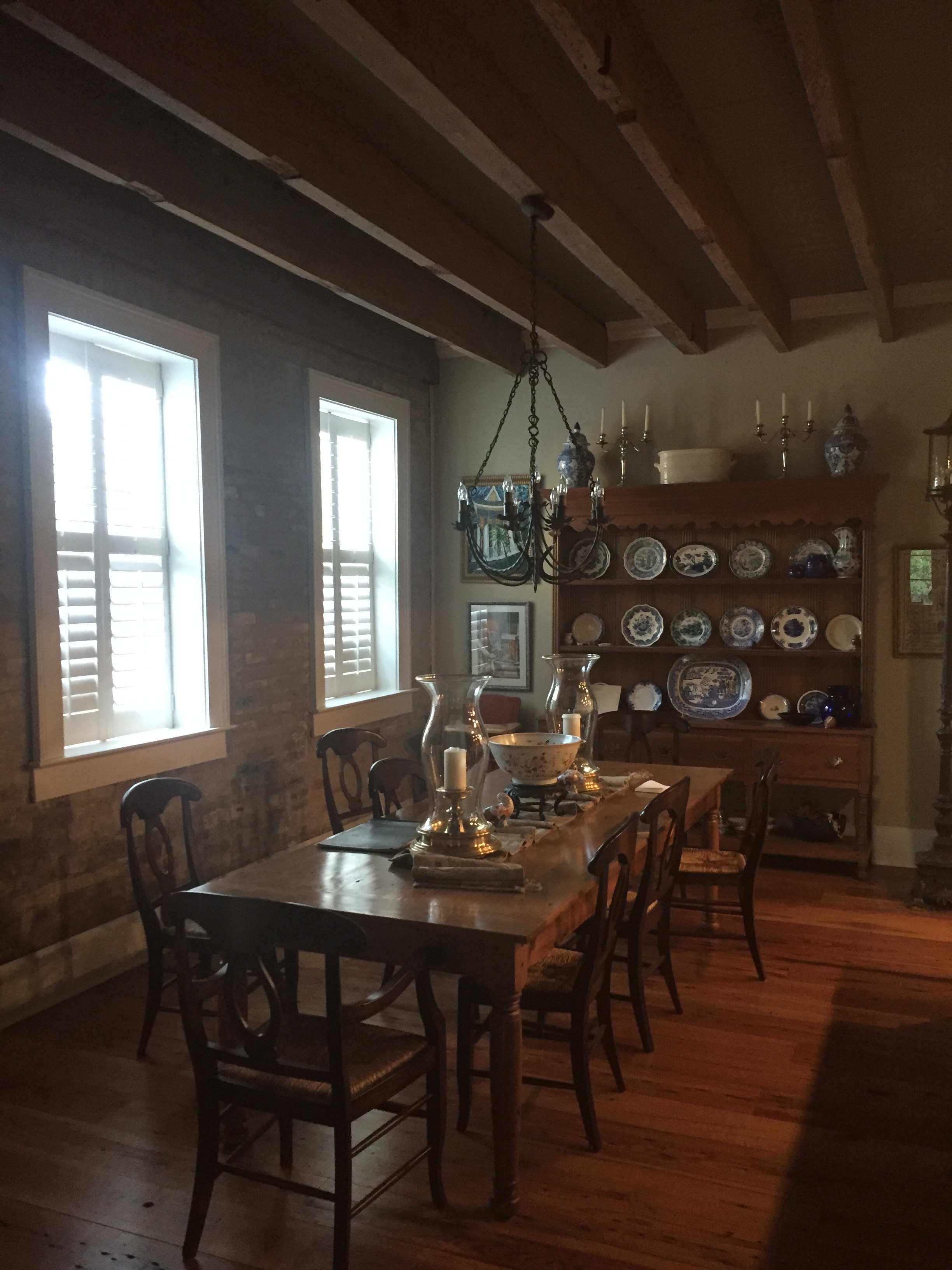
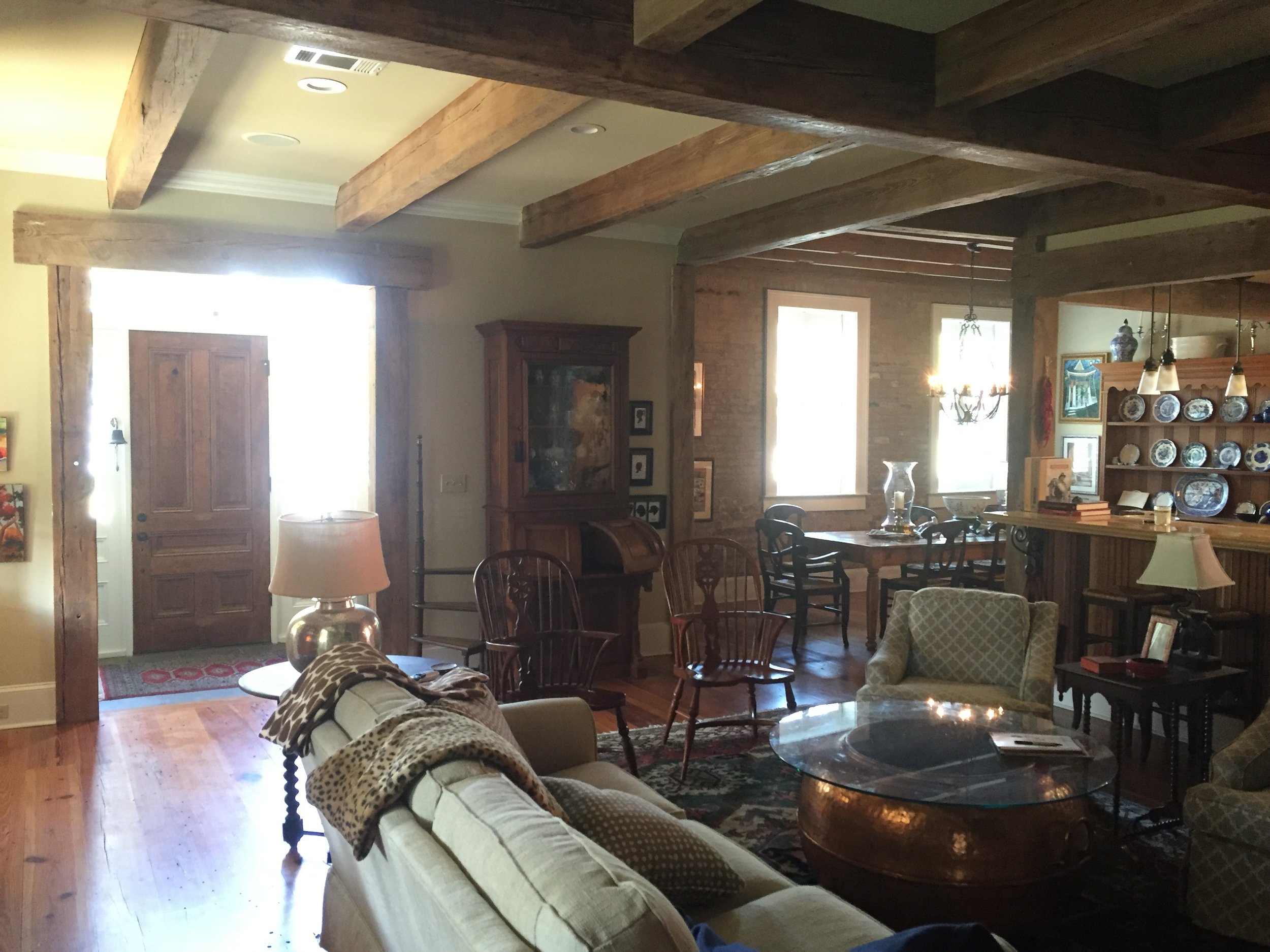
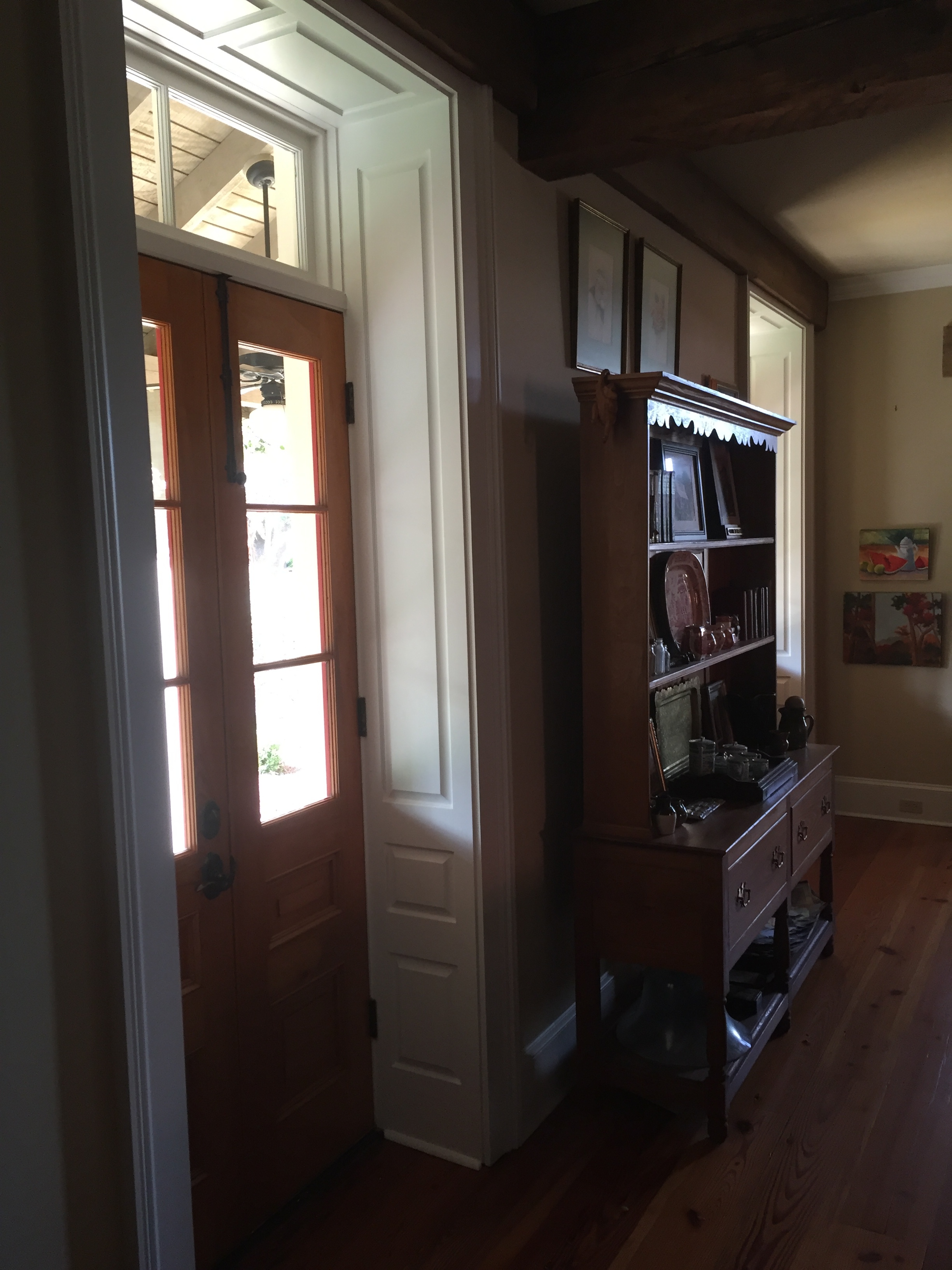
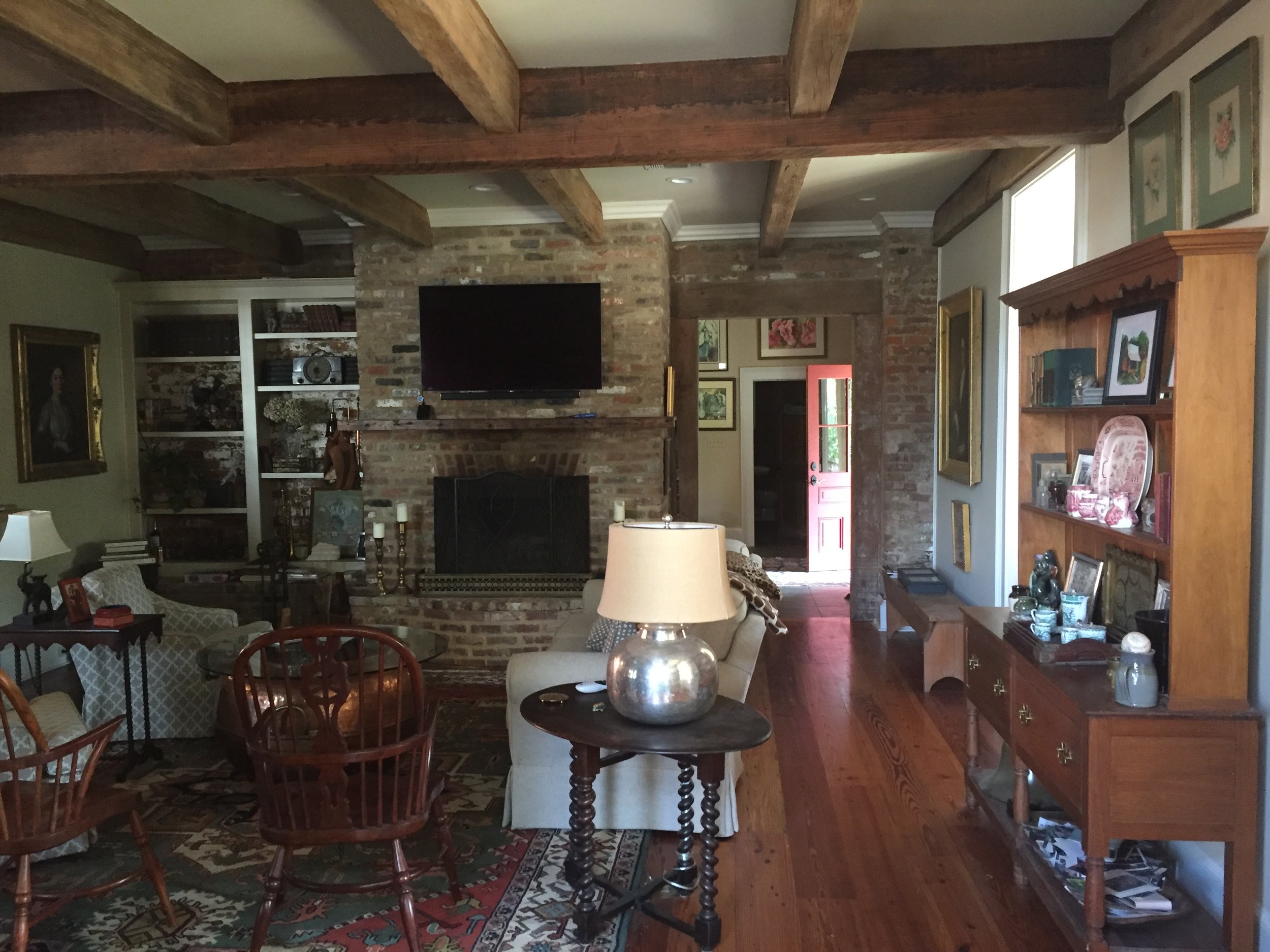
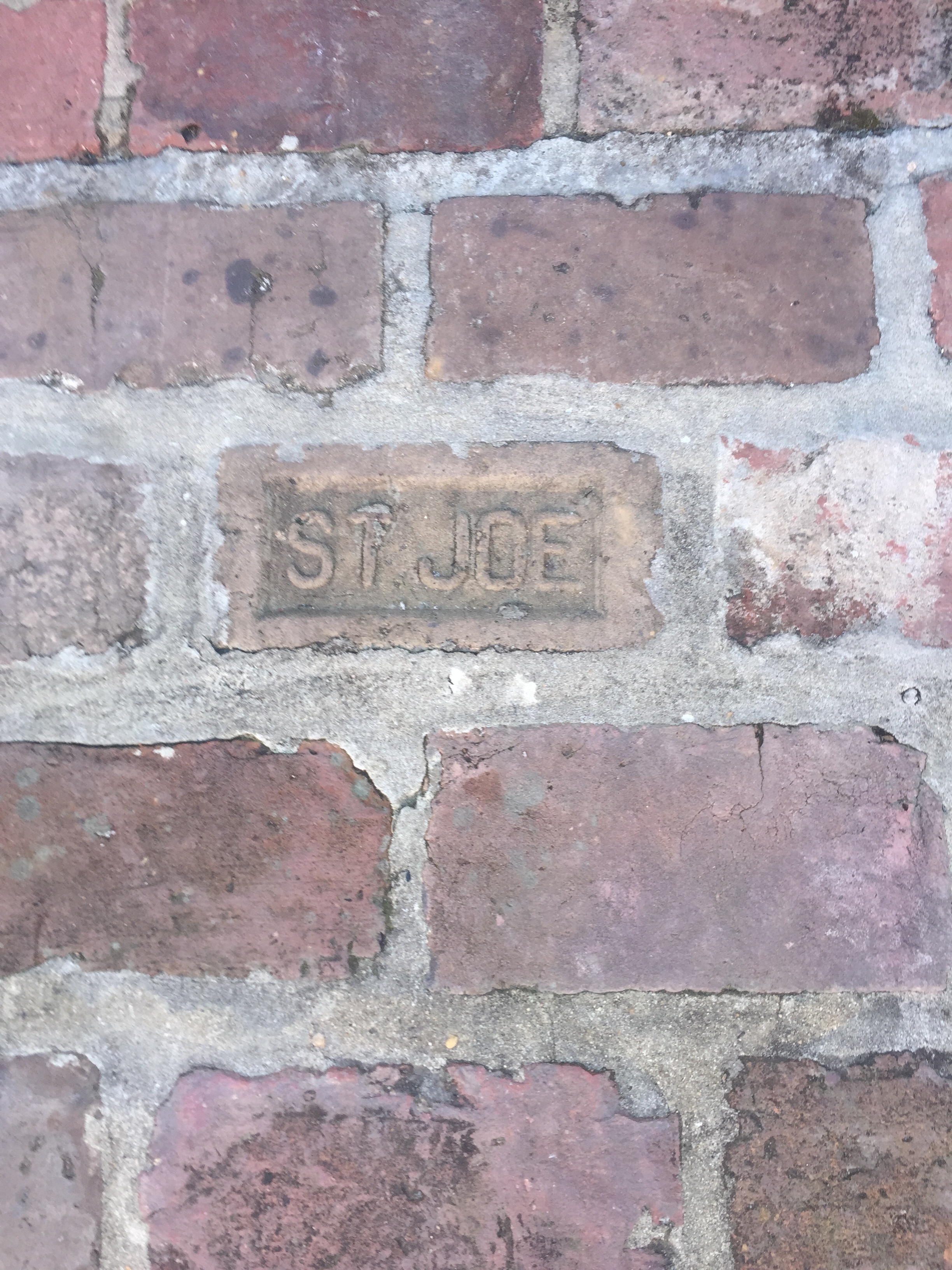
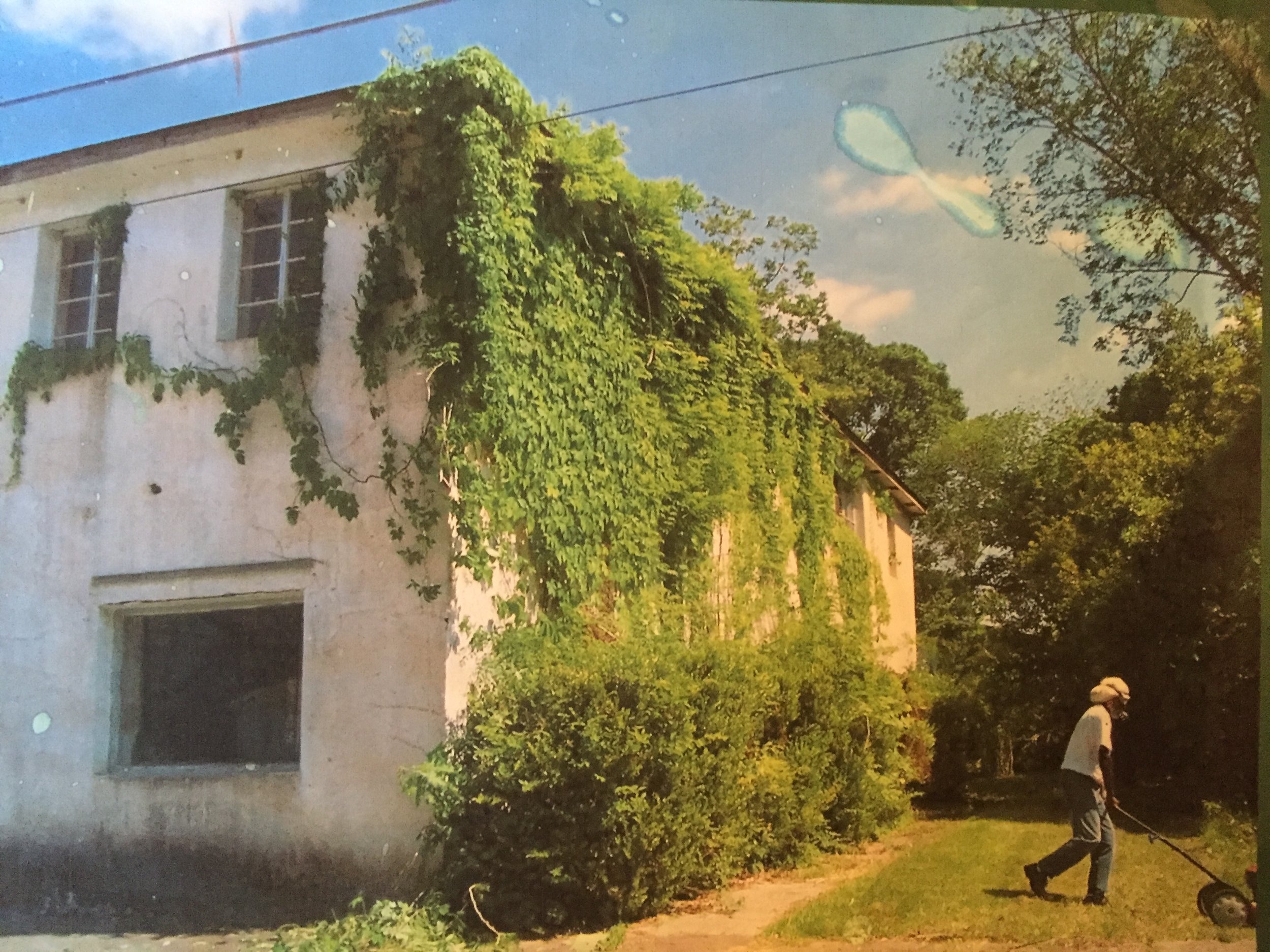
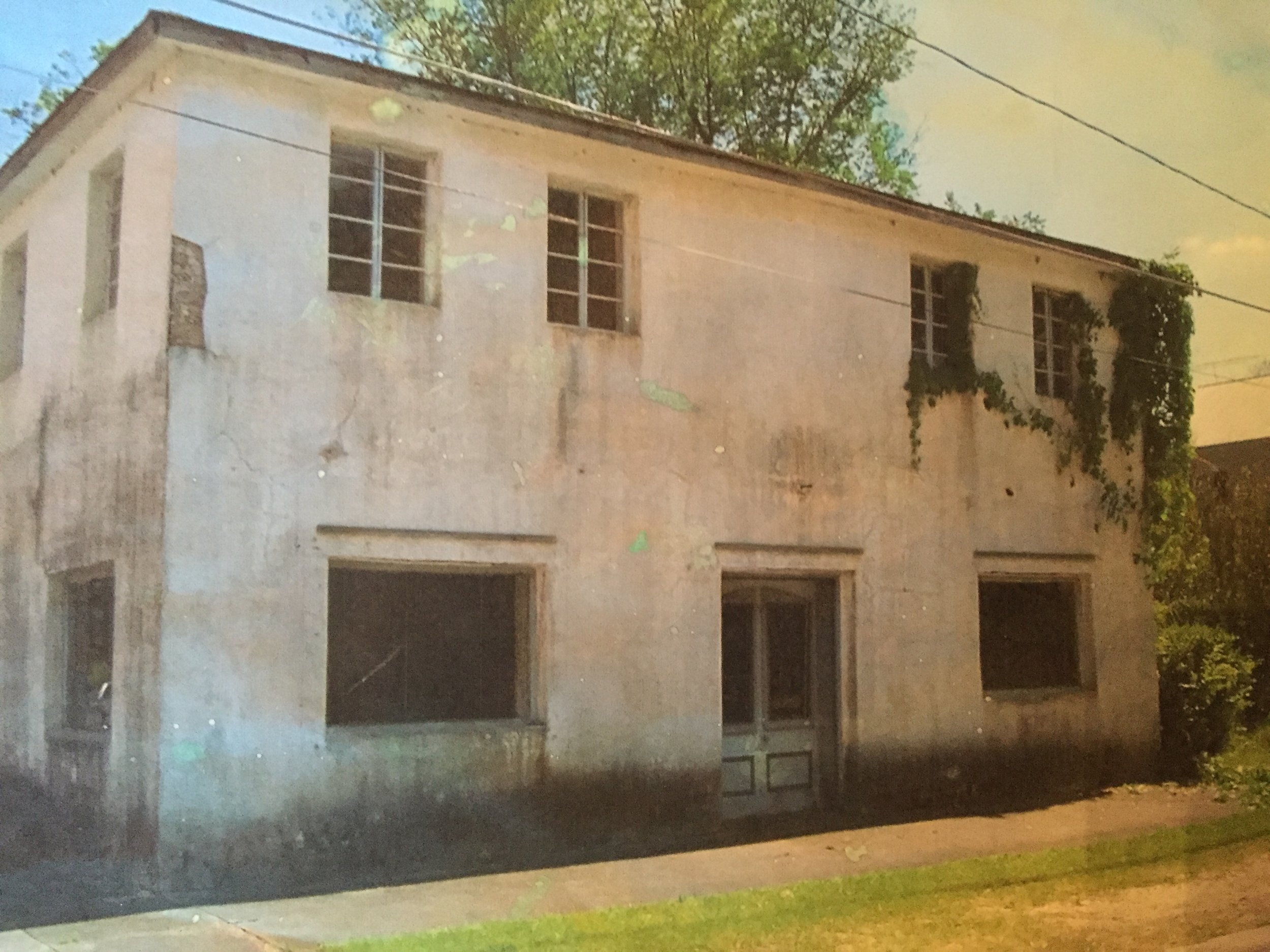

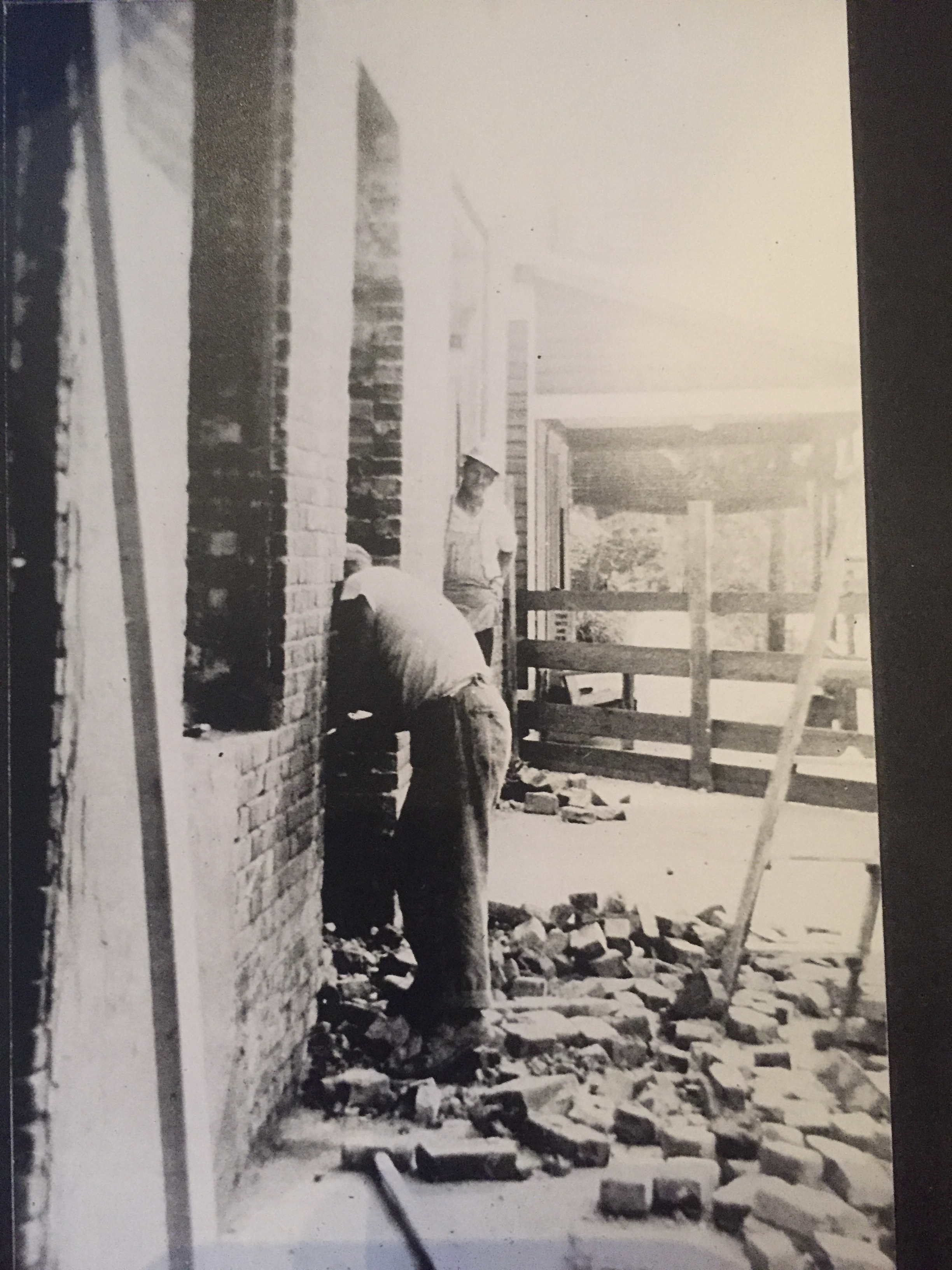
The collection of photos above provide a glimpse of the structure in its current iteration and what it looked like before restoration. The house invokes an inviting warmth similar to many of A. Hays Town's designs. The rough sawn beams in the interior likely come from dismantled barges. Throughout the early 1800s barges were constructed upriver to send down materials, but weren't worth sending back up. Common practice was to repurpose the barges as building material.




